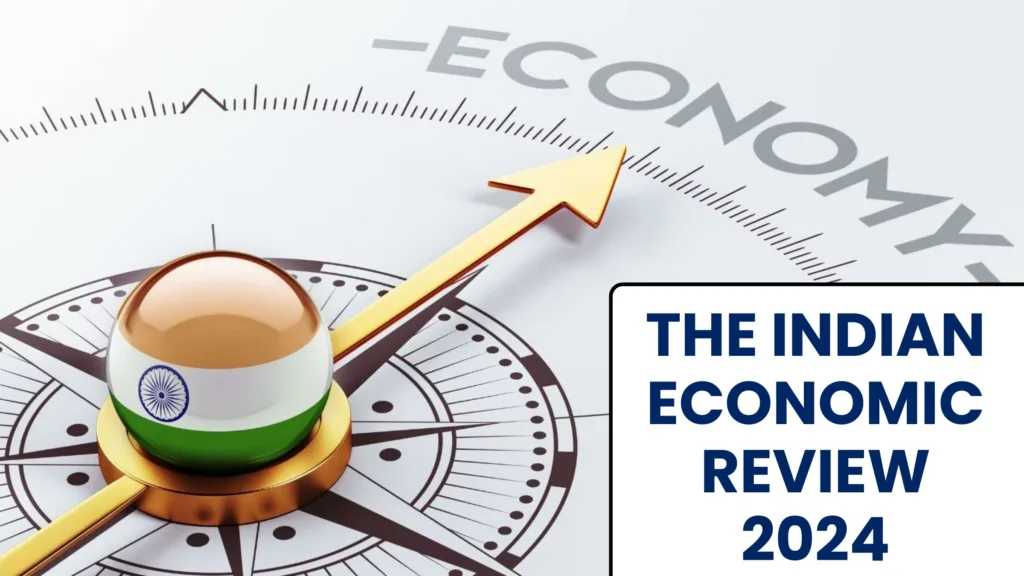
In the absence of the traditional Economic Survey for the upcoming interim budget amid the 2024 general elections, the government has introduced the “Indian Economy – A Review
Economic Survey 2024 (Pre-General Election)
In the absence of the traditional Economic Survey for the upcoming interim budget amid the 2024 general elections, the government has introduced the “Indian Economy – A Review.” This document, while not a replacement for the official survey, provides critical insights into the last decade’s economic performance and future prospects. Projections indicate India’s potential to become a $5 trillion economy within three years, with a possible reach of $7 trillion by 2030. The report emphasizes the positive impact of structural reforms and adopts a cautious outlook, acknowledging global uncertainties. Its release strategically navigates the intersection of economic analysis and political dynamics in this election year.
No Economic Survey Ahead Of Interim Budget 2024
The Economic Survey will not be presented before the 2024 interim budget because the budget is a vote-on-account before the Lok Sabha elections. This is a parliamentary convention, and the task is deferred to the incoming government.
The Economic Survey is an annual document that outlines India’s economic status. It is prepared by the Chief Economic Advisor (CEA) and the Finance Minister and is usually presented a day before the Union Budget announcement. However, in November 2023, Moneycontrol reported that the finance ministry would publish a “concise” document detailing the state of the Indian economy.
Why is No Economic Survey in 2024?
The primary reason for the absence of the Economic Survey this year is the upcoming general elections. The potential for the survey to become politicized, given the prospect of a change in government post-elections, could disrupt the regular budget process that typically follows the survey presentation.
The Indian economy is likely to grow at over 7 per cent in the coming years and is expected to become the third-largest economy in the world in the next three years, with a GDP of $5 trillion, driven by domestic demand along with supply-side measures such as investment in infrastructure and measures to boost manufacturing, the Ministry of Finance said in a report titled ‘The Indian economy — A review’ prepared by Office of Chief Economic Adviser.
Below are the main points covered in the article “Indian Economy – An Overview”.
- “It now appears very likely that the Indian economy will achieve a growth rate at or above 7% for FY24, and some predict it will achieve another year of 7% real growth in FY25 as well. If the prognosis for FY25 turns out to be right, that will mark the fourth-year post-pandemic that the Indian economy will have grown at or over 7 per cent. That would be an impressive achievement, testifying to the resilience and potential of the Indian economy. It augurs well for the future,” Chief Economic Adviser V Anantha Nageswaran said in the preface of ‘The Indian Economy — A review’
- He, however, clarified that this is not the Economic Survey of India prepared by the Department of Economic Affairs and that it will come before the full budget after the general elections. Usually, the Economic Survey for the ongoing financial year is presented in Parliament a day before the presentation of the Budget for the next financial year on February 1.
- Only the elevated risk of geopolitical conflicts is an area of concern, the review said. Noting that the global economy is struggling to maintain its recovery post-Covid because successive shocks have buffeted it, the review said some of these shocks, such as supply chain disruptions, have returned in 2024. “If they persist, they will impact trade flows, transportation costs, economic output and inflation worldwide,” it said.
- Nageswaran listed three trends for the coming years — the end of the era of hyper-globalisation in global manufacturing, the advent of Artificial Intelligence, and the energy transition challenge.
- With the policies adopted and implemented in the last decade, the Indian economy is better placed than ever to take on these three key challenges, he said. “The Union government has built infrastructure at a historically unprecedented rate, and it has taken the overall public sector capital investment from Rs 5.6 lakh crore in FY15 to Rs 18.6 lakh crore in FY24, as per budget estimates.
- That is a rise of 3.3X. Whether the total length of highways, freight corridors, number of airports, metro rail networks or the trans-sea link, the ramp-up of physical and digital infrastructure in the last ten years is real, tangible and transformative,” he said.
- In the absence of the traditional Economic Survey for the upcoming interim budget amid the 2024 general elections, the government has introduced the “Indian Economy”
- As India gears up for the Lok Sabha polls and Finance Minister Nirmala Sitharaman prepares to present an interim budget on February 1, 2024, one notable absence in this election year is the traditional Economic Survey. This comprehensive annual report, usually presented by the Chief Economic Advisor (CEA), provides a detailed analysis of the country’s economic performance over the past year and offers insights into its prospects. However, in lieu of the Economic Survey, a noteworthy alternative has emerged – the “Indian Economy – A Review.”
Indian Economy – A Review: A Substitute Perspective
Highlights of Indian Economic Review 2024
In the recent review of the Indian economy, several key points underscore the country’s economic trajectory, focusing on achievements, challenges, and future prospects.
Growth Projections
India is positioned to become a $5 trillion economy within the next three years, with a potential to reach $7 trillion by 2030. The GDP growth rate for FY24 is anticipated to surpass 7.2%, outpacing the global economy struggling to achieve a growth rate exceeding 3%. This marks the third consecutive year of India achieving a growth rate exceeding 7%.
Structural Reforms and Positive Impact
The review emphasizes the positive impact of structural reforms undertaken over the past decade. These reforms include a rise in public sector investment, a robust financial sector, and significant non-food credit growth, all contributing to the moderate yet consistent growth of the Indian economy.
Fintech and Stock Market Milestones
India has emerged as the third-largest fintech economy globally, following the USA and the UK. Additionally, surpassing Hong Kong, India now holds the fourth position in the global stock market rankings. This achievement is attributed to both domestic and global investor interest, coupled with a continuous flow of Initial Public Offerings (IPOs).
Financial Inclusion Impact
The Pradhan Mantri Jan Dhan Yojana has played a crucial role in increasing the percentage of women holding bank accounts. The report highlights a substantial rise from 53% in 2015-16 to an impressive 78.6% in 2019-21.
Women’s Participation and Empowerment
Various initiatives, including the Skill India Mission, Start-Up India, and Stand-Up India, have led to a significant increase in the female labor force participation rate (LFPR), rising from 23.3% in 2017-18 to 37% in 2022-23. The Gross Enrolment Ratio (GER) for females in higher education has seen a fourfold increase, reaching 27.9% in FY21 from 6.7% in FY01. Overall GER has more than doubled from 24.5% to 58.2% between FY05 and FY22.
MSME Dynamism and Economic Efficiency
Micro, Small, and Medium Enterprises (MSMEs) are experiencing heightened dynamism due to supportive government measures. The implementation of the Goods and Services Tax (GST), along with domestic market integration and increased incentives for production, has led to improved economic efficiency and reduced logistics costs.
Cautious Outlook
While celebrating these achievements, the review maintains a cautious outlook on future growth and inflation, acknowledging global uncertainties and challenges that may impact India’s economic trajectory..
Key Takeaways
GDP Growth
India’s poised to surpass 7.2% GDP growth in FY24, outpacing global economic struggles for a 3% growth rate.
Consistent Growth
Indian economy set to achieve over 7% growth for the third consecutive year
Factors Driving Growth
Public sector investment rise, robust financial sector, and substantial non-food credit growth over the decade
Fintech Economy
India ranks as the third-largest fintech economy globally, after the USA and the UK.
Stock Market Ascension
India becomes the fourth-largest stock market globally, surpassing Hong Kong, due to investor interest and IPO activity
Financial Inclusion
PM Jan Dhan Yojana contributes to a significant increase in women holding bank accounts (53% in 2015-16 to 78.6% in 2019-21
Women’s Participation…
Female LFPR rises from 23.3% in 2017-18 to 37% in 2022–23; initiatives like Skill India, Start-Up India, and Stand-Up India promote women’s involvement.
Higher Education Growth.
GER for females in higher education increases fourfold, from 6.7% in FY01 to 27.9% in FY21; overall GER doubles from 24.5% to 58.2% (FY05 to FY22)
MSME Dynamism.
MSMEs experience increased dynamism due to government support
Economic Efficiency
GST implementation, domestic market integration, and production incentives lead to improved economic efficiency and reduced logistics costs
Also Read : Eurozone GDP, US consumer confidence key drivers today , China PMI, US monetary meeting will be main triggers today
Recommended Read : Forex Newsletter – 30 Jan 2024
